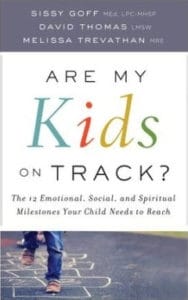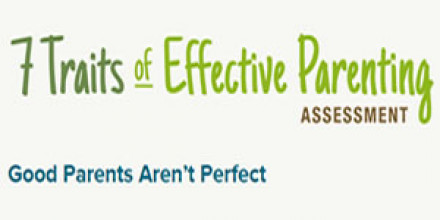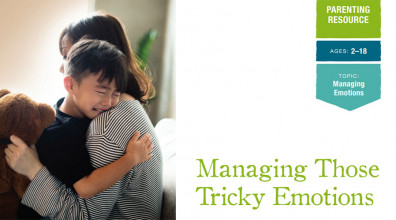Opening:
Call to Action:
Jim Daly: Hi, I’m Jim Daly. With the devastation caused by Hurricane Florence on the East Coast, hundreds of thousands of people need our help. Focus on the Family is partnering with Convoy of Hope, a faith-based non-profit organization specializing in disaster relief. Your financial support will provide emergency supplies to hurting families. Please, join with Focus and Convoy of Hope and give today. Call 800, the letter A and the word FAMILY, or visit focusonthefamily.com/Florence.
End Call to Action
Excerpt:
Sissy Goff: God gave you exactly what you need already for the life of each of your kids, even the one that’s the most challenging. And that child really, in effect, will be the most transformative and will teach you your need for Jesus and His grace and mercy for you so that you in turn can spill it over to them because that’s so much of what we do when we love kids.
End of Excerpt
John Fuller: That’s Sissy Goff. And she joins us on Focus on the Family along with her co-worker and fellow author David Thomas. And I’m John Fuller. Your host is Focus president and author Jim Daly.
Jim Daly: Okay John, so what do you recall about your children’s milestones?
John: Well, everybody remembers the first steps that the child took…
Jim: That’s true.
John: …From, you know, the coffee table to the sofa – so that kind of thing?
Jim: That’s a good one. I remember with Trent – you know, he’s just a tall kid. He was always off the charts. So that was the big milestone physically was – we’d always go in and he’d be 100 percent, 105 percent. “Oh, wow. We’re so proud.” So it’s just one of those things. Parents usually drill into something of those milestones – physical, spiritual, emotional. And we’re going to discuss this today with two special guests. They’ve written a great book, Are My Kids on Track? And I’m telling you guys out of our own experience – for Jean and me – this is terrific. This is the kind of content that you really need to know that we’re generally moving in the right direction. There’s no perfection – that’s critical for everybody to hear. But these are general observations with your children that you can see where you’re maybe a little less successful and you have to lay a little more concentration in a particular area. This book and this broadcast today and next time will help you do that.
John: And the book is Are My Kids on Track? And our guests are Sissy Goff and David Thomas. And they come to us by way of Daystar Counseling Ministries in Nashville, Tennessee. They’re both very popular speakers and authors. And this book is available at focusonthefamily.com/radio. Stop by and get a copy. It’s got some great insights in it.
Body:
Jim: Sissy, David, welcome to Focus – great to have you…
Sissy: Thank you.
David Thomas: Thank you.
Jim: …For the first time.
Sissy: We’re delighted to be here.
Jim: Actually, John and I are really delighted to have you, aren’t we, John? We’re desperate dads.
(LAUGHTER)
John: Are my kids okay? Are they on track?
Jim: Are my kids on track? Please tell me they’re on track. You know, and that’s so funny because that is kind of the discussion in homes, the pillow talk between mom and dad. I’m sure the girlfriend talk between moms, you know? Are my kids really on track? And I love this idea. You’ve written about the 12 emotional, social, and spiritual milestones your child needs to reach. What do you think is one of the most basic of the basic milestones you need to see in a child and about what age?
David: I would say, for boys, I want to see them moving toward, progressing toward – and we talk a lot about how practice makes progress. I loved your statement a little bit earlier about perfection…
Jim: Right.
David: …That we’re not looking for perfection. We’re just looking for progress that they are developing the milestone of vocabulary that they can simply name what it is that they feel.
Jim: You know, sometimes I think we don’t think that’s enough. But we don’t have that long view of time. How does a parent chill when it comes to that? To know that, “Okay, I’ve got some time here. They don’t have to have it all down pat by 4. You know, they’re gonna learn things at 12 that are different than when they’re 17.” So how do you, as a parent, how do you dial back a little bit in your intensity?
David: Yes. One of the first things we say, in fact, in the introduction to this book is these milestones are different than the physical milestones where we all know that we want to see the kids are crawling by certain age, walking by a certain age. These are milestones that kids are gonna be progressing toward all throughout their lives. So you’re right. No boy is going to have mastery of emotional vocabulary by the age of 5. He’ll still be developing that into adult manhood. We all know some adult men who still need to be developing in that category.
Jim: I was going to say, do we get it by 55? I don’t know.
Sissy: I’m gonna be quiet over here.
(LAUGHTER)
Jim: You are. You’re really quiet. But in that way – again, I opened with that idea of the size chart. I mean, it’s so funny when you go as a parent to the well-baby check-up, right? Sixth month, one year – especially with your firstborn because it’s all new to you. You don’t know what to expect. And you’re the beaming parent. “Yes. He’s in the top percentile,” or “She’s noticing and grabbing my finger with great strength,” you know, all the questions the pediatrician will ask. But noticing those behavioral things can become more confusing, a little less obvious. You know how tall your child is. You know what your child weighs. How do you begin to assess with any kind of accuracy, and at what age, when these developmental characteristics are coming through? How do you do that?
David: I think for us that was a big part of why we even wanted to write the book because we do have these well-defined questions of, “Is he making eye contact? Is she gripping? Is he pulling up? Is she crawling? Is she walking?” But we don’t have those kinds of questions for kids in these categories, so that was a part of why we wanted to first define the milestones but then ask some questions. What does it look like to develop? What are the nuts and bolts and ingredients so that kids can be practicing and progressing toward these?
Jim: Well, let’s get into some of that. So Sissy, I’m coming to you now.
Sissy: Okay.
Jim: The uh – the observation – when does a child begin to, I guess, express themselves in a way that you can begin to assess their emotional capacity? I mean, other than crying?
Sissy: Well – right. Right.
Jim: Crying is an emotion, right?
Sissy: Well, and that’s -that’s part of what’s so confusing. And in our counseling practice, we see kids and families. And we also do parent consults. And it’s fascinating. Even parents of toddler-age kids – you know, I mean, y’all probably talked about this a lot. Anxiety’s a childhood epidemic in America today. And so that is – I mean, when we first both started counseling 20 to 25 years ago, I think probably every three to four out of every 20 families walking in the door were dealing with anxiety. Now I’d say at 16 to 17 out of every 20 new families walking in the door.
Jim: That is amazing.
Sissy: It is.
Jim: Why?
Sissy: Well, there are a million things we could talk about. I mean, I think…
Jim: Give me the big rocks.
Sissy: Well, part of it – I mean, screens – That’s one of the things…
Jim: Screen time, media…
Sissy: …Because part of what’s happening is their brains are being overstimulated, just bombarded with images. And so then our brains reach this heightened state – any of us, not just kids. And then – but kids don’t have the ability to calm themselves back down. That’s one. Overscheduling – honestly, we’re just doing too much. I had a girl say to me one – she was really introverted and leaned toward anxiety. And she said, “I had to stop my mom from scheduling activities for me because it was too much.” And, you know, we’re to be the gatekeepers as the grownups in their lives. And so…
Jim: Let me ask you this, though, for that mom and dad. It’s not just a mom but parents who are wanting their kids to experience so much in order to get them on the right path, to get them on the honor roll path – this is really critical that you don’t burn them out.
Sissy: Right. And kids are feeling more pressure than they ever have.
Jim: What’s a good thing for a mom and a dad to think about that’s a little healthier perspective that way? That it’s healthy to have idle time.
Sissy: It is absolutely healthy to have idle time.
Jim: Because you remember growing up – “Idle time’s horrible. Idle time’s horrible.” But actually, some downtime is really critical.
Sissy: Yes – and to pay attention. I mean, it’s what you were saying. What are you noticing in your child? And they’re going to tell you that they’re overstimulated, but it’s often gonna be – and that’s one of the things I was kind of going towards with anxiety. It comes out as anger typically for girls and boys. And so you will see they’re gonna respond in a bigger way than the situation warrants. And that’s when you know something more is happening. And how can I kind of down and figure out what it is?
Jim: And that’s good advice. I like that. Now, boys and girls develop differently obviously. The culture, especially the elite culture, wants to kind of dumb that down that we’re all the same, that it’s just a matter of inputs and society that casts those kind of – but science is pretty straight on this. Our brain chemistry is different. The processes in which our brain thinks and responds to outside stimulation is different. Describe for us those differences between boy and girl development.
David: In terms of emotional development, a great example would be that she will have a more expansive vocabulary – period – end of sentence.
(LAUGHTER)
So she’s gonna have a more expansive emotional vocabulary.
Jim: Is it okay to laugh about that?
David: It is!
Jim: It’s like, yeah, it’s true.
Sissy: Yes. Y’all picked on the male gender. We can pick on the female gender.
David: She has more words. She has more vocabulary. So her ability to express, to articulate her experience is going to be advance because she’s got more words to work with. And in addition to that, one of the things we know to be true, is she has advanced abilities in terms of reading the emotions on others. So she’s inevitably going to be ahead of him oftentimes, not always. There are certainly exceptions to the rule – but ahead of him in terms of empathy because she has advanced skills in terms of understanding what’s going on inside of another person. So there’d be two examples right there where the differences are strong.
Jim: And that’s good with the girls being verbal, more verbal typically. The boys struggle with expression. And when you talk about an emotional vocabulary, how do you help a boy? And what age should a parent begin to help a boy become more capable in their vocabulary to express their emotions?
David: We recommend early on, from 1 year on, be using a feelings chart. And it’s the starting point, that when we’re using emotional words with them, we’re referencing a chart and just pointing. “I felt sad today because I think I hurt a friend’s feeling. I felt embarrassed today that dads are talking in front of boys.” He’ll say, “I felt embarrassed today. I had to give a presentation to the board of directors, and I didn’t feel prepared.” Those words are landing on kids. And I would say for boys, they’re seeing that emotions reside in the life of a man. That’s what it looks like.
Jim: And for the listener who may not be grabbing what we’re talking about, it’s those typical charts that have a happy face and angry face. And you have your child point to what they’re feeling if they can’t verbally express it. And then hopefully down the line, they’ll be able to verbalize it like you said. That’s what we’re talking about.
David: Yes – and to understand accurately what’s going on left to his own devices. You all know this. With teenage boys, you know their feelings chart would include bored and annoyed. It’s just those two.
(LAUGHTER)
Jim: Pretty much.
David: We got to help them figure out what’s underneath, what’s really going on. So they can then figure out what to do with it.
John: And there are so many cultural influences that seem to say guys don’t feel. Or guys are angry – kind of two extremes, right?
David: Yes. And we’re quick to push into that myth to say it’s not that girls have more feelings. She just has more vocabulary. She has a better ability to articulate those things. So that’s why we have to labor a little longer. I love your word of concentration. Concentrate on that space with boys – that we’ve got to labor longer in that space so that he develops an emotional vocabulary. And we talk about how these milestones build on each other. Parents are so quick to want to go to, “I want my kids to figure out how not to melt down. I want them to figure out how to work through frustration better.” And that’s an important objective. But if they don’t even know what they’re feeling, like, that’s the foundational building block. That’s why we start with vocabulary. We’ve got to figure out, “What is it that I’m feeling so that I can then figure out what to do with it?”
Jim: So you have all these obstacles in the culture and in the home and in your makeup – your personality. Your gender plays a role in that. How do you begin to counteract those to work with it – I guess, would be a better way to say it – and provide building blocks that the child – like the emotional chart – you know, how are you feeling today? Let’s move that up to 5 years old when they are a little more capable of expressing themselves. Sissy, with a little 5-year-old girl, what are we gonna do?
Sissy: Well – and it’s interesting ‘cause boys have a hard time expressing, which is our first milestone. And perspective is the second one, which would really be regulating. And that’s where girls struggle a little bit more is in the regulating of their emotions because they’re so much more aware of it. And I’ve started – one of our building blocks that we talk about, but it’s really borne out of counseling with girls – I’ve started doing something called a scale where, you know, we think about emotions on a one to ten scale. And you all know having children yourself, some of them just lean toward 10 on everything whether it’s sadness, anger, embarrassment, worry – that they live at 10. And because I work primarily with girls, I call it a drama-mometer.
John: A drama-mometer.
Jim: A drama-mometer.
John: I could use one of those.
Sissy: Yes. And so what I will do with families is in a calmer moment, for a child who lives at 10, to have the parents say to them, “Tell me what a 10 would be on your scale? You know, what’s the saddest or the worst or the scariest thing you can imagine happening?” And so they name that early on, just like we’re talking about naming our feelings. And then when the child gets in the car and says, “This is the worst day I’ve ever had in my whole life,” you can say, “Gosh, that sounds really hard” – because we always want to start with empathy. “That sounds really hard. Tell me what number you think it was on your scale?” And then that’s some automatic perspective that that child in particular doesn’t have. Now, I sat with a girl yesterday in counseling who said to me – she was talking about her parents. She was a teenager struggling with her parents. They make her crazy, all this. And her reaction is so strong. And I said, “So that sounds like a 10 on your scale. And the situation really sounds like a four.” And she said, “Yeah?” And I said, “But your response is a 10?” And she said, “Uh-huh, I don’t care.” So it gets a little more complicated with adolescence ‘cause they just live there.
John: I’ve heard that.
Jim: She didn’t take the bait.
Sissy: She didn’t take the bait.
Jim: She didn’t say, “Oh maybe I should ratchet it down by six clicks.”
Sissy: She did not care.
Jim: I’m pretty quick with math there.
Sissy: That was good.
Jim: Sissy, I don’t want to let go of this because, again, in your book, the stumbling blocks that you identify for girls in addition to the one you just mentioned – like, the pressure to please.
Sissy: Yes.
Jim: That’s a big one.
Sissy: It is.
Jim: The pressure to perform and the need for control – I mean, most women listening right now are going, “Yes. I still…”
Sissy: “Struggle with those things.”
Jim: “…Struggle with those things.” ‘Cause that – and again, it’s not to besmirch or demean. This is just wiring issues, you know, and this happens.
Sissy: And that’s such a big part of it because I think as we talk about the genetic components, that from the earliest stages girls are – kind of define themselves against this backdrop of relationship. And so that need to please comes out of that – is born out of that.
Jim: How do we equip our daughters and at what age? Again, I want to move kind of the age continuum if you can carry it all the way through from a 3, 4-year-old up to 16, 17-year-old. How do we give our girls – equip them to avoid the pressure to please? That – if you can achieve that as a parent in your girls, that is a milestone. That is an incredible achievement. How would you go about that? Just take us all the way through.
Sissy: One of the things I talk with parents of girls of all ages about is a combination of kindness and strength and how often we lean towards one or the other, that we either just don’t have a voice at all and so we don’t ever stand up for them ourselves – themself or we’re really strong and we have these strong boundaries and were unkind in the midst of that. And so teaching girls from their earliest stages to say things like, “I want to play with you but not when you treat me like that.” You know, how different for a woman that my adult relationships would be if I’d learn that at 8 or at 10 or at 14 what that looks like in a friendship. “I want to be your friend, but I’m not gonna continue to hang out with you when you’re posting like that about me on social media or when you’re relating to me in that way.”
Jim: And really it’s the strength to be able to say, that they feel safe enough…
Sissy: Helping them find their own voice, yes – yes.
Jim: …To be able to express that. Give me a practical example of how you would do that? At age 8, are you taking your daughter’s side if you observe something and say, “Honey, here’s a better way to handle that?” Or if she comes to you in tears because she was overrun by a friend – give me an example of how that should play out.
Sissy: Our magic formula we go to over and over are empathy and questions. “That sounds really hard. What do you want to do about that? What do you think would help?” Where it’s her voice starting to say, “This is what’s going to make a difference.” And we’re empowering her, rather than when we when we say, “I want you to go right back up to her, and you tell her she doesn’t get to tell you.” Then all of a sudden, we’re saying, “You can’t figure it out. I’m gonna tell you what you need to say because you don’t have it inside of you.”
Jim: That’s really critical.
Sissy: Where we want her to feel like she’s got it.
Jim: And that really is true all the way along that continuum – I talked about it – age-wise.
Sissy: Empathy and questions – yes.
Jim: Let me ask you this, David. When it comes to the boys’ side of that, you know, these things that we just expressed – the pressure to please, the pressure to perform, the need for control – what’s early in a boy’s development that would be similar to those things but more boyish?
David: One of the first and biggest obstacles for boys is going to be his hardwiring. We’re kind of back to those differences. And I talk early on about how emotions for a boy have a lot of physicality to them. So it’s why a toddler age boys are so prone to biting, kicking, screaming. Teenage boys are so prone to punching a hole through a wall, yelling, moving toward disrespect. And so part of what I love to do with boys and parents of boys is helping them understand that’s a normal part of how God hardwired you. You need an outlet to channel that intensity, that physicality. So with toddler-age boys – for example, I have twin boys. When my sons were 3 years of age, we – we purchased one of those Bozo Bop Its. Like an inflatable something with sand in the bottom where you could punch when you felt that…
John: It goes to the ground and then springs back up.
David: Yes. And it would bounce right back up. And a part of what’s happening in that is that we’re training boys to recognize when our bodies are sending us signals or sirens or alarms are going off inside of us that – “If I don’t channel that physicality in a direction that’s constructive or healthy, it’ll come out sideways.” And we graduated up from the Bozo Bop It to a kickstand. And we now have – I have 15-year-old adolescent boys in my house. And we now have a body bag hanging in our basement. We look like we’re training boxers at this point.
Jim: That’s excellent. We’ve got one, too.
John: This is for punching not storing.
David: Yes. It is for punching. And it’s – it’s this idea that when I need to work something through, when I, as an adult male – when you do, that’s a great place to go for a period of time. So that I don’t use my wife or so that my boys don’t use their mom as a verbal punching bag, that they just spew all over her, which is what we can be prone to do with family members.
Jim: That’s good.
David: So that’s kind of a path from little all the way to older that I think is useful to help the boy understand his hardwiring and where to take that emotion.
John: Well, you’re listening to Focus on the Family with Jim Daly. I’m John Fuller, and our guests today are Sissy Goff and David Thomas. And we’re talking about the book they wrote, Are My Kids on Track? and these concepts of emotional vocabulary and understanding and expressing. You’ll get help from the book and from the emotions chart we have for you that you’ll find at focusonthefamily.com/radio. Or call us, and we can tell you more – 800-A-FAMILY.
Jim: Sissy, even as we’re talking about that description of boys, my mind is still wandering back here with the trauma that so many girls, especially teen girls, are facing today because dad’s not a part of their life. I mean, he may be still part of the family. But emotionally, he’s not connected. When you look at some of those statistics, it’s horrifying how few fathers are actually really engaged with their kids. In that regard, when you look at the impact on those stumbling blocks, the pressure to please, the pressure to perform, the need for control, they seem to be rooted in that relationship with dad or the lack thereof. Speak to the impact of that. What can a father do for his daughter to help her be healthier in those three areas?
Sissy: I think one of the best things a father can do for his daughter is just to have time with her where he is engaged with her emotionally, where he’s asking her questions, where he is communicating to her that he is interested in her. There’s a book that I love that talks about basically she’s saying in the essence of this book, “How my dad treated me as what I came to expect from the rest of the men in my life.”
Jim: Right.
Sissy: And so to think about that long term, what you are communicating to her and from her earliest stages who you’re communicating to her that she is in the way that you respond to her, that you validate her is what she’s going to believe about herself at her deepest core. And so how do you validate her emotionally? How do you validate her spiritually? How do you validate her in something that goes so far beyond what she looks like? Because that’s what she can resort to if she’s not getting it at deeper levels.
Jim: And so often as dads – and John, you are a father of girls, so you need to jump in here – my impression would be, I can get away with kind of the – the jocular teasing with my boys. And we can be a bit superficial. I don’t have a girl. I would think when it comes to fathering a girl you have to be very intentional because of the vocabulary, David, that you’re talking about earlier have to be a bit more intentional than you would be with the boys. And you have to be more thoughtful. She’s trying to learn from you, safety. That’s one of the aspects of your book, one of your building blocks that she’s feeling safe in the home. That’s coming from the dad I would think mostly. How does a father be mindful of that and not just be superficial is my question?
Sissy: And I love that you said that about joking because I have a lot of girls who – I think their primary relationships with their father becomes joking. And it becomes sarcastic. And I think she can start to be hurt and not have a way to communicate that.
Jim: And we dads think that’s a relationship.
Sissy: Right.
Jim: We’re good.
Sissy: Right.
Jim: We actually have a great, fun relationship, but it’s not enough.
Sissy: No. And she wants to be invested in. And I think it gets so much trickier towards adolescence because there is this – y’all know. I mean, with teenagers, there’s this overnight shift that happens where they become – they’re a different person when they wake up one morning. And in that – and I think that largely happens with moms, too. They push so much away from moms. But with dads, it’s almost like, they get so awkward and stiff-armed when you go to hug them. And it really has just occurred to them that you’re a boy for the first time in their life. And they feel really awkward with boys. And then what happens is they start to reject their dads. Or dads go to them and say, “Hey, let’s go on our Saturday morning date.” And they say, “I don’t really care. I want to be on my phone I want to – whatever.” And that pushes dad’s buttons because he feels rejected.
Jim: Right.
Sissy: And so then he stops leaning in and stops pursuing her for time when she still is desperately craving it. And so that’s one of the things I would encourage dads to do is to keep pressing it.
Jim: Well, before we leave that subject, that awkwardness is critical to recognize. And don’t run from it. Figure out how to overcome it really and stay engaged.
Sissy: And you can laugh with it. Laugh about it and acknowledge it and say, “Okay. I know it’s kind of awkward these days. But I still want to hang out with you. You’re so important to me.”
Jim: When you consider the boys – and we’re winding down now – so we’re going to come back next time and pick this up if you guys are willing. But when you look at boys and their interaction with mom, what are some things that mom may do that that really zaps that little boy?
David: Moms out there, I say this with the greatest respect, but one of the first stumbling blocks I talk about is coddling. I think there is something so extraordinary and amazing about the relationship between a mom and a boy. In fact, in the first two stages of his development, birth through 8, I talk about how a mom is like the center of his universe. And he’s just orbiting around her. And in that, it is really easy out of that deep love and that strong connection to do a lot of rescuing and coddling with him. In fact, we will observe oftentimes that it’s so much more instinctive for moms to be really hard on girls, really rescuing with boys. And so that’s one of the first things I’d say in helping him develop emotionally is being able to take a step back and allow him to struggle and allow him to fail, whether it’s the daily-ness of homework. You know, “This math is so hard” and immediately pulling up a chair and sitting down right behind him and working it all through, every problem with him as opposed to sitting down for a minute, helping him get unstuck and then getting up and doing something else in the house so that he has that opportunity to work through the heart.
John: But a lot of moms are thinking, “He’ll fail if I don’t do that.” There’s a high cost.
Jim: No. There’s not a single mom thinking that.
John: There’s a high cost if I don’t inject myself here.
David: Or even if it’s, you know, below, he’s gonna fail it. It’s just it’s gonna take him twice as long, which it probably will because he – boys are disorganized. And there’s a lot of elements in that. Or it’s just – he’s gonna be that much more uncomfortable. And I talk all throughout the emotional development chapters of just – one of the most foundational gifts we can give a boy is learning to navigate discomfort, whether it’s boredom, frustration, sadness, worry, whatever it may be. It’s one of the greatest gifts moms can give boys to answer your question.
Closing:
Jim: That’s wonderful. I love that. David and Sissy, we are at the end of our time today. And I so appreciate your insights and helping our children better grasp these emotional milestones. And next time, we want to give you more age-appropriate tools and practical ways you can help develop those milestones in your child so he or she can be healthy and relate well to others.
You know, this program is right at the heart of what we do here at Focus on the Family. We want to help you be the best parent you can be and that’s one reason we created our 7 Traits of Effective Parenting Assessment. It is a fantastic tool that will give you an honest look at your unique strengths as a parent but also point out some areas you might need to work on. It’s a great indicator for you. We also have other resources available for you, like the book we mentioned today, Are My Kids on Track? by guests David Thomas and Sissy Goff, and a free downloadable emotions chart with our beloved Adventures in Odyssey characters.
We’re here to help families just like yours with encouragement and godly advice, but we can’t do it without your support. And here at the end of the fiscal year, your prayers and financial contributions are so very important to the work here. Your help allows us to be that shining light for families in need of answers. Won’t you join us in this ministry effort?
John: And you can do that by praying for Focus on the Family, and then your financial support is crucial of course. So donate a gift of any amount today, and we’ll send a thank you copy of Are My Kids on Track? And as Jim said, you can also get that parenting assessment and downloadable emotions chart as well. All of this at focusonthefamily.com/radio, or you can donate and get resources when you call 800, the letter A and the word FAMILY.
On behalf of Jim Daly and the entire team, thanks for listening to Focus on the Family. I’m John Fuller inviting you back as we hear more from David Thomas and Sissy Goff and once again, help you and your family thrive in Christ.
















